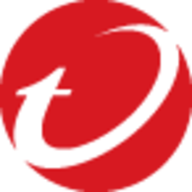


Sysdig Secure and Trend Vision One compete in the cloud security category. Sysdig Secure has the upper hand in cost-efficiency and support, while Trend Vision One is favored for its extensive features.
Features: Sysdig Secure offers comprehensive container security, runtime protection, and threat detection. Trend Vision One includes advanced threat intelligence, automated response capabilities, and broader threat detection for complex environments.
Room for Improvement: Sysdig Secure could enhance its user experience and simplify configurations. Trend Vision One could benefit from more integration options, performance optimization, and additional support structures.
Ease of Deployment and Customer Service: Sysdig Secure has a straightforward deployment process and consistent customer service satisfaction. Trend Vision One offers flexible deployment but has varying support responsiveness.
Pricing and ROI: Sysdig Secure is noted for lower setup costs and favorable ROI. Trend Vision One, though more expensive, is considered a valuable investment due to its extensive capabilities.
| Product | Market Share (%) |
|---|---|
| SentinelOne Singularity Cloud Security | 3.1% |
| Sysdig Secure | 2.7% |
| Trend Vision One - Cloud Security | 1.0% |
| Other | 93.2% |



| Company Size | Count |
|---|---|
| Small Business | 44 |
| Midsize Enterprise | 21 |
| Large Enterprise | 53 |
| Company Size | Count |
|---|---|
| Small Business | 5 |
| Midsize Enterprise | 2 |
| Large Enterprise | 3 |
| Company Size | Count |
|---|---|
| Small Business | 11 |
| Midsize Enterprise | 6 |
| Large Enterprise | 7 |
SentinelOne Singularity Cloud Security offers a streamlined approach to cloud security with intuitive operation and strong integration capabilities for heightened threat detection and remediation efficiency.
Singularity Cloud Security stands out for its real-time detection and response, effectively minimizing detection and remediation timelines. Its automated remediation integrates smoothly with third-party tools enhancing operational efficiency. The comprehensive console ensures visibility and support for forensic investigations. Seamless platform integration and robust support for innovation are notable advantages. Areas for development include improved search functionality, affordability, better firewall capabilities for remote users, stable agents, comprehensive reporting, and efficient third-party integrations. Clarity in the interface, responsive support, and real-time alerting need enhancement, with a call for more automation and customization. Better scalability and cost-effective integration without compromising capabilities are desired.
What are SentinelOne Singularity Cloud Security's standout features?SentinelOne Singularity Cloud Security is deployed in industries needing robust cloud security posture management, endpoint protection, and threat hunting. Utilized frequently across AWS and Azure, it assists in monitoring, threat detection, and maintaining compliance in diverse environments while providing real-time alerts and recommendations for proactive threat management.
In the cloud, every second counts. Attacks move at warp speed, and security teams must protect the business without slowing it down. Sysdig stops cloud attacks in real time, instantly detecting changes in risk with runtime insights, a unique AI architecture, and open source Falco. Sysdig delivers live visibility by correlating signals across cloud workloads, identities, and services to uncover hidden attack paths. By knowing what is running, teams can prioritize the vulnerabilities, misconfigurations, permissions, and threats that matter most. From prevention to defense, Sysdig helps enterprises move faster and focus on what matters: innovation.
Sysdig. Secure Every Second.
Trend Vision One- Cloud Security Security provides comprehensive cloud security, threat protection, and compliance monitoring. Users commend its advanced features, ease of use, and strong performance in keeping digital assets safe. The platform improves efficiency and productivity for organizations while offering excellent customer support.
We monitor all Container Security reviews to prevent fraudulent reviews and keep review quality high. We do not post reviews by company employees or direct competitors. We validate each review for authenticity via cross-reference with LinkedIn, and personal follow-up with the reviewer when necessary.